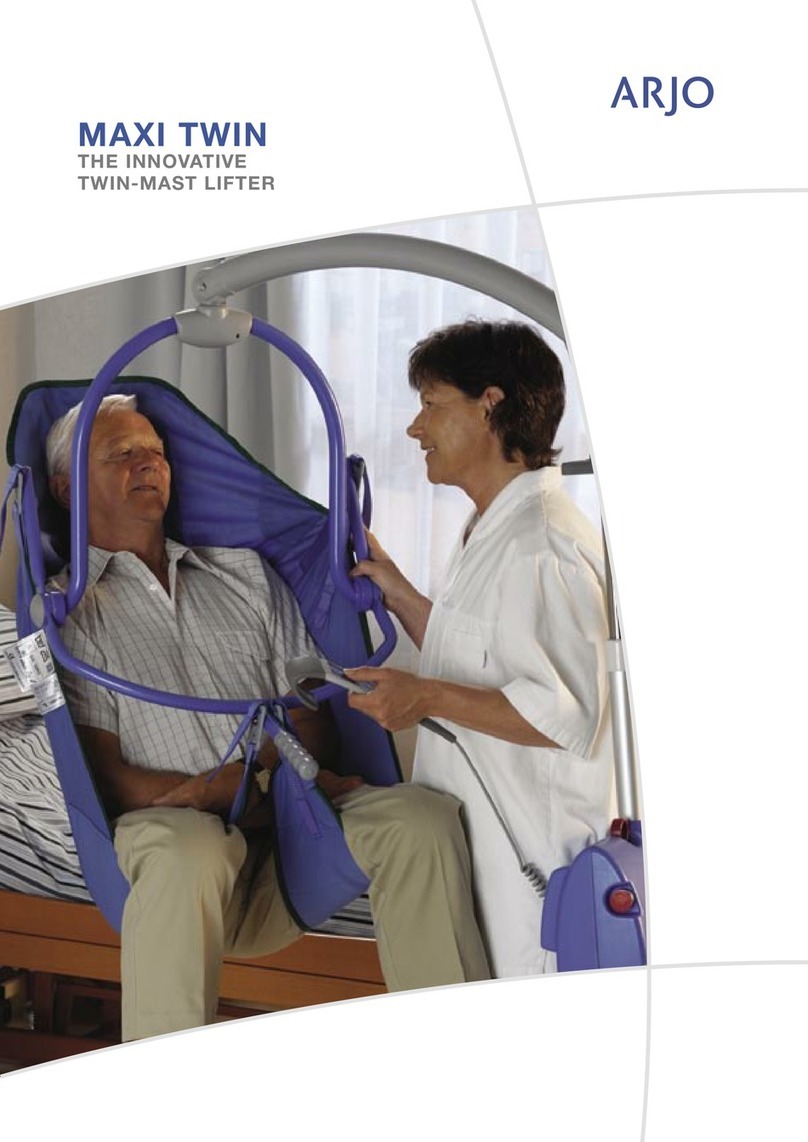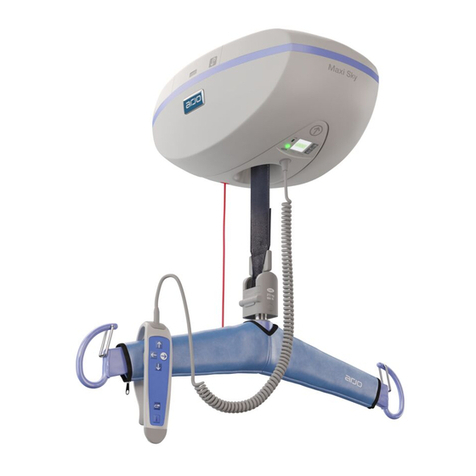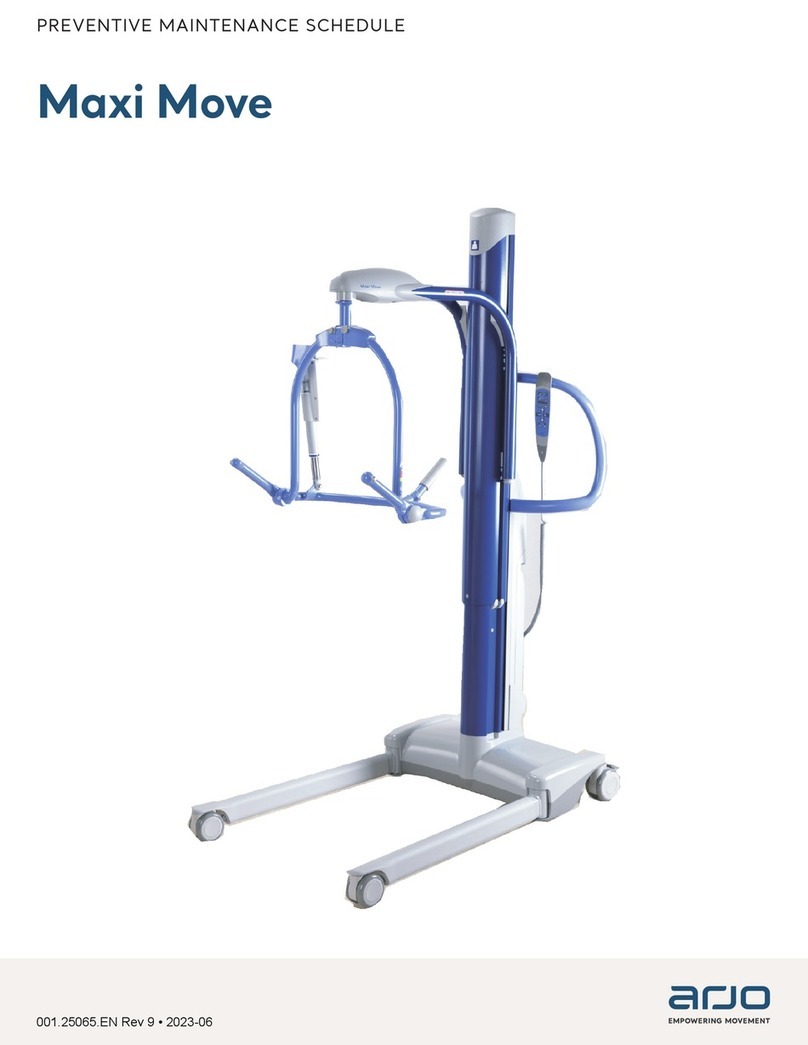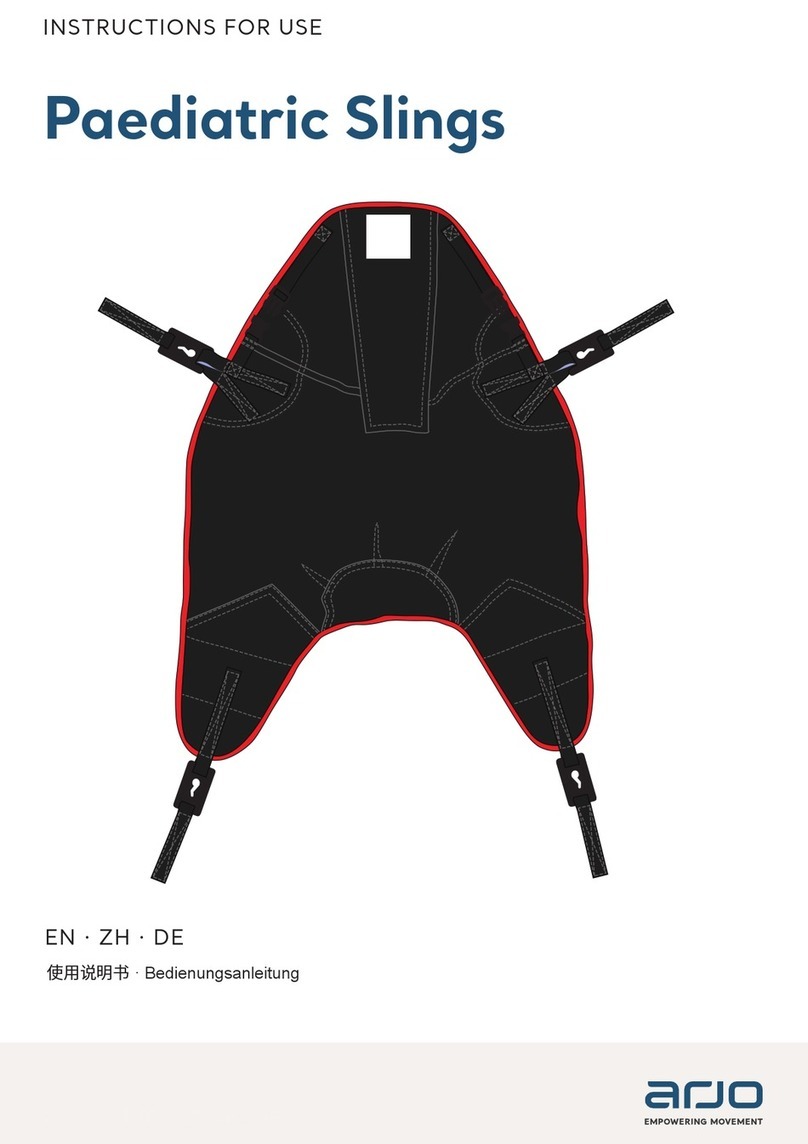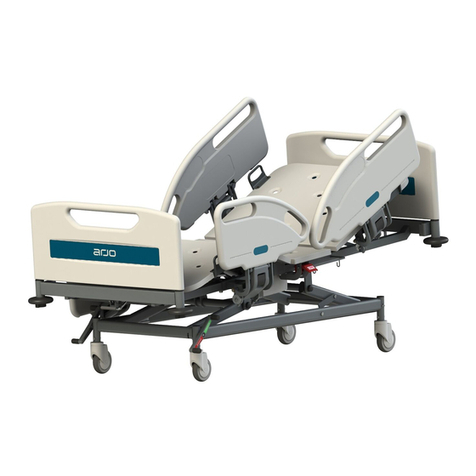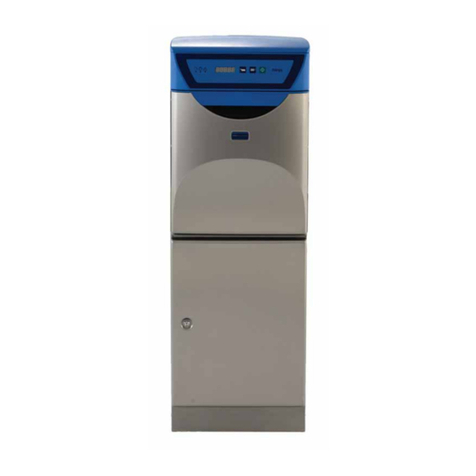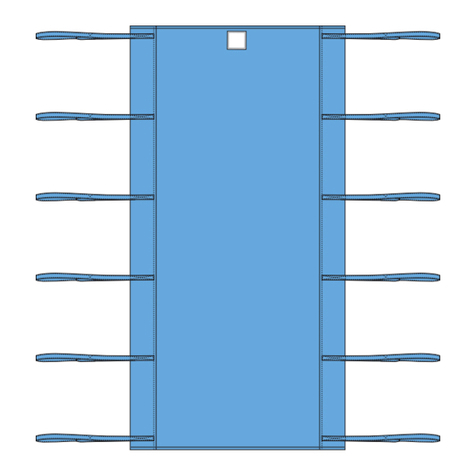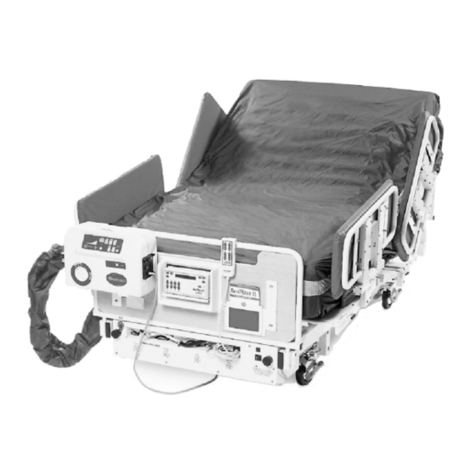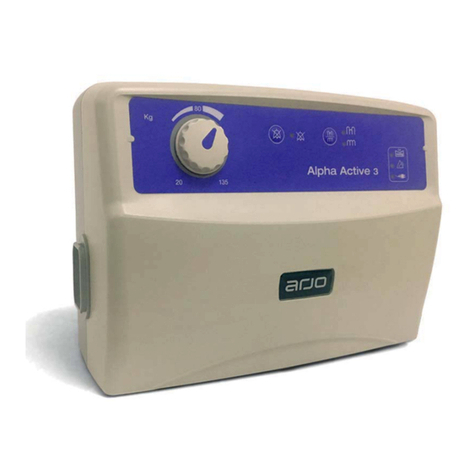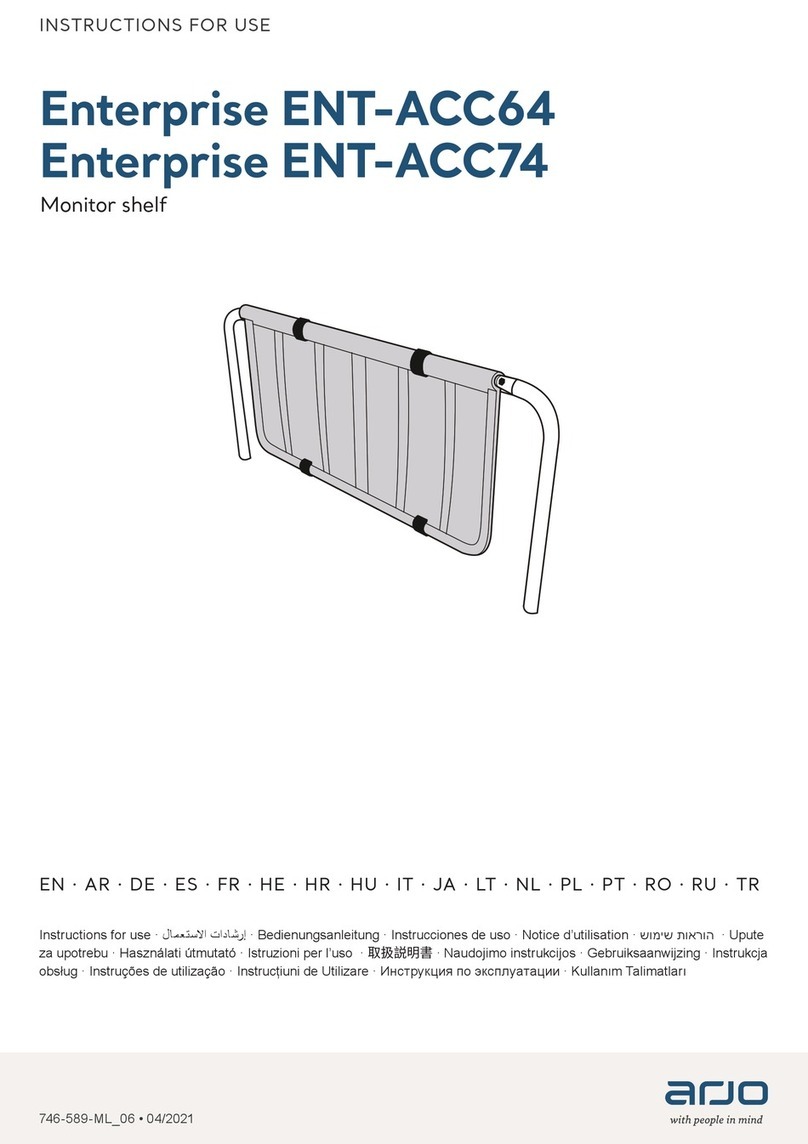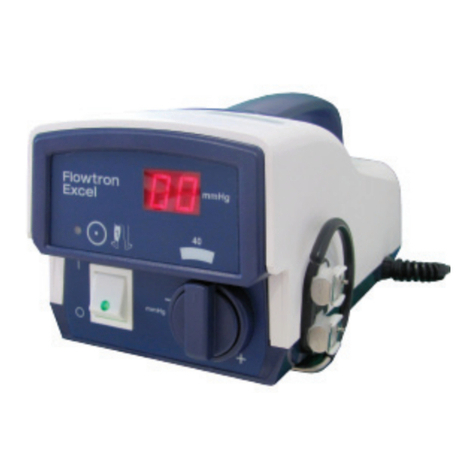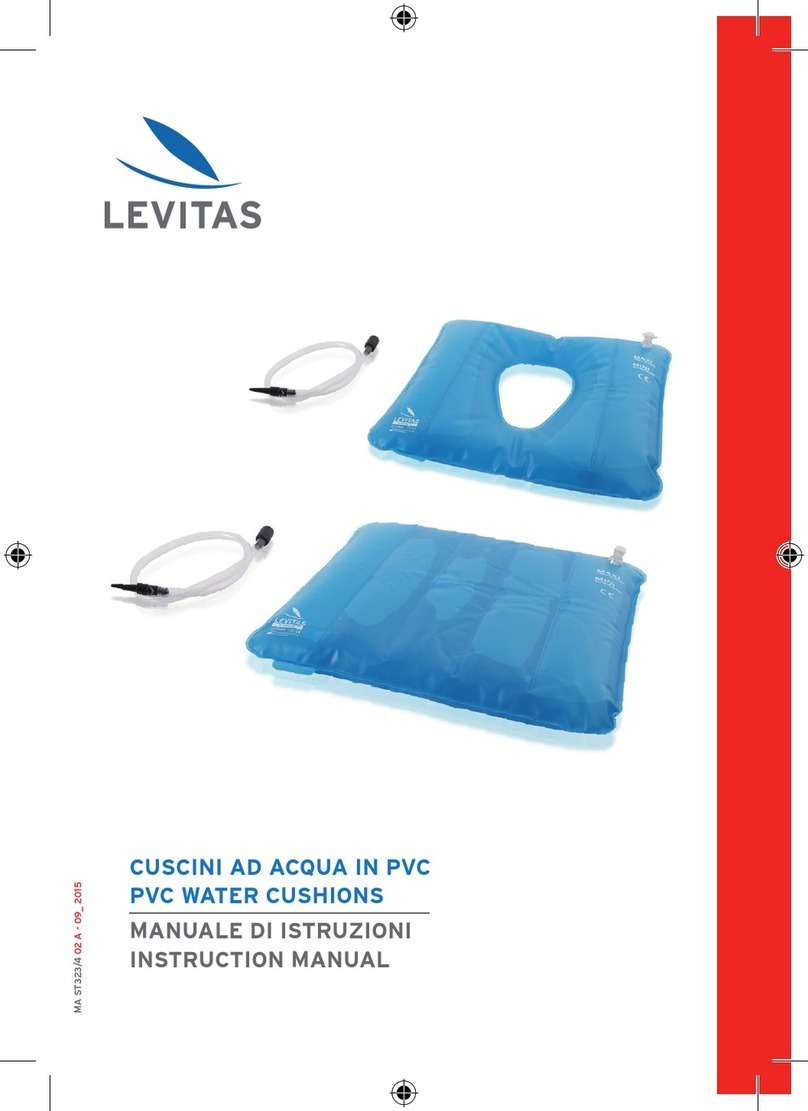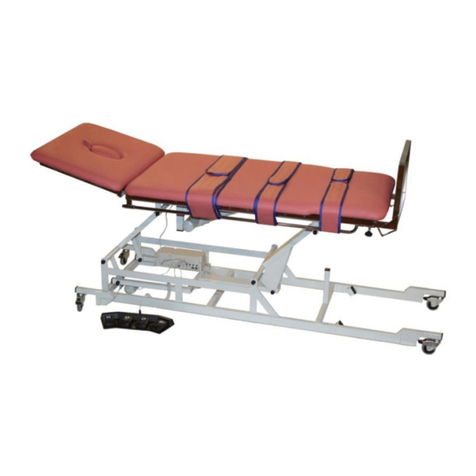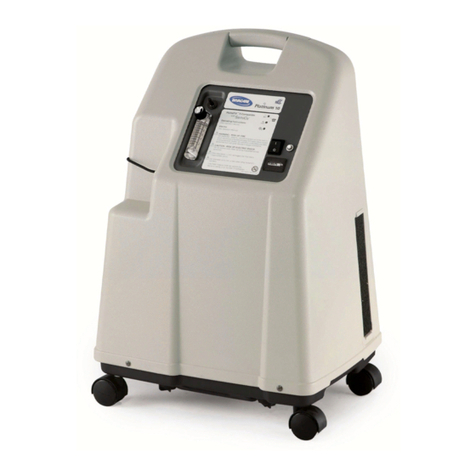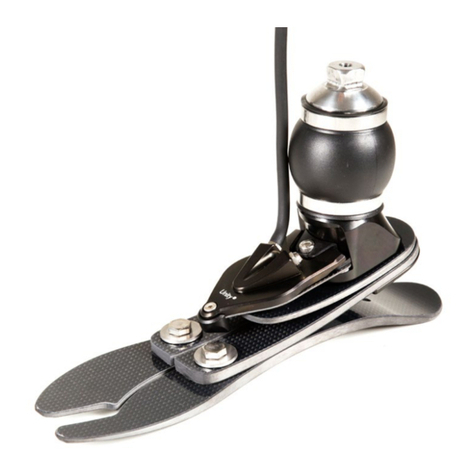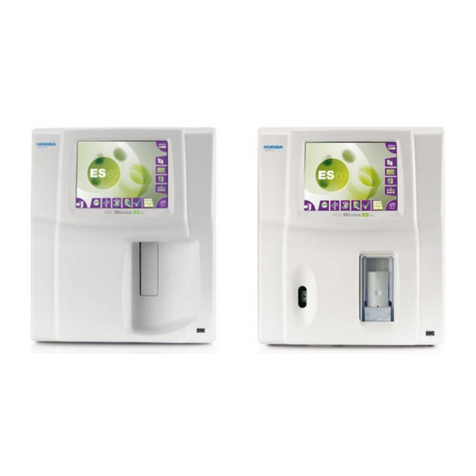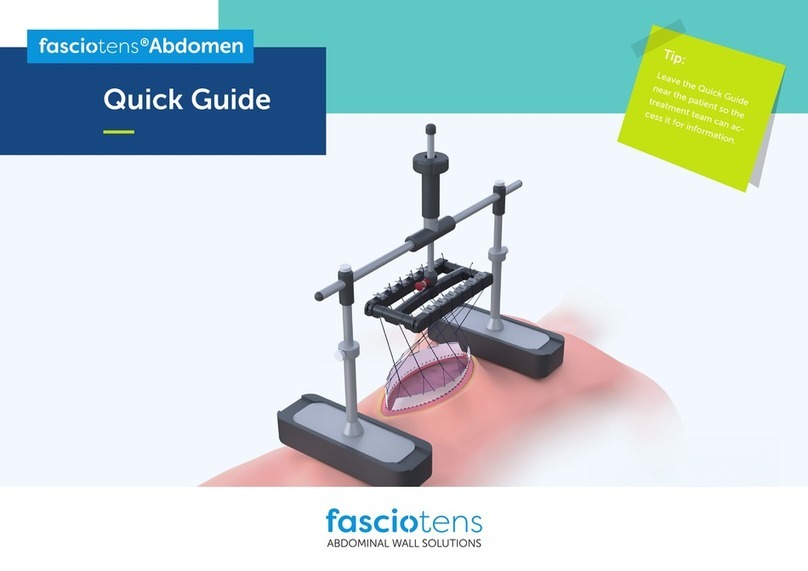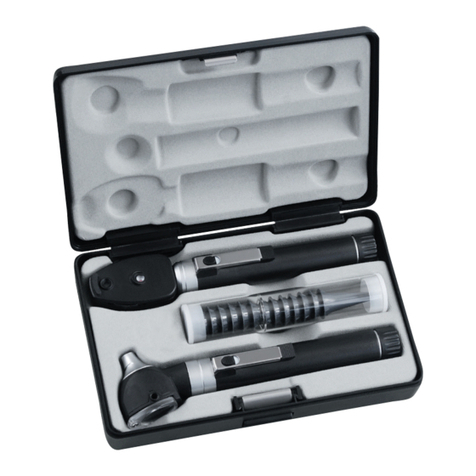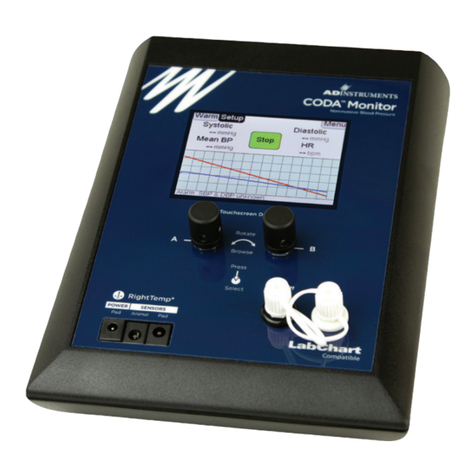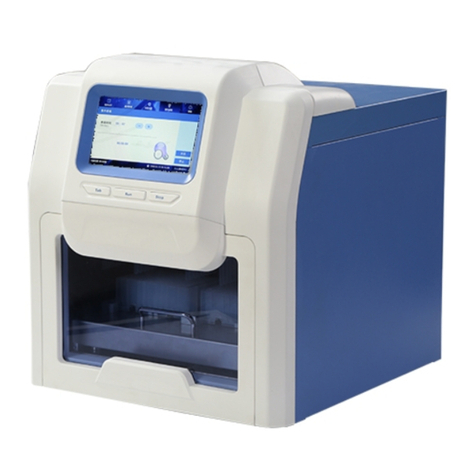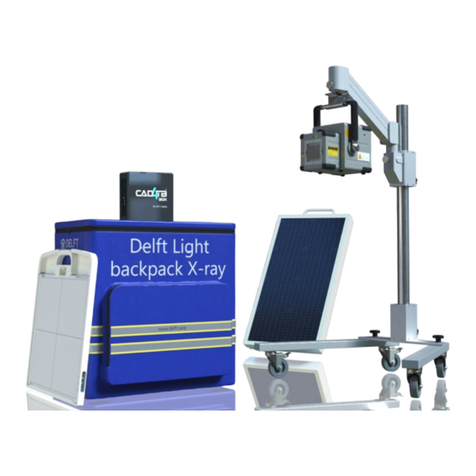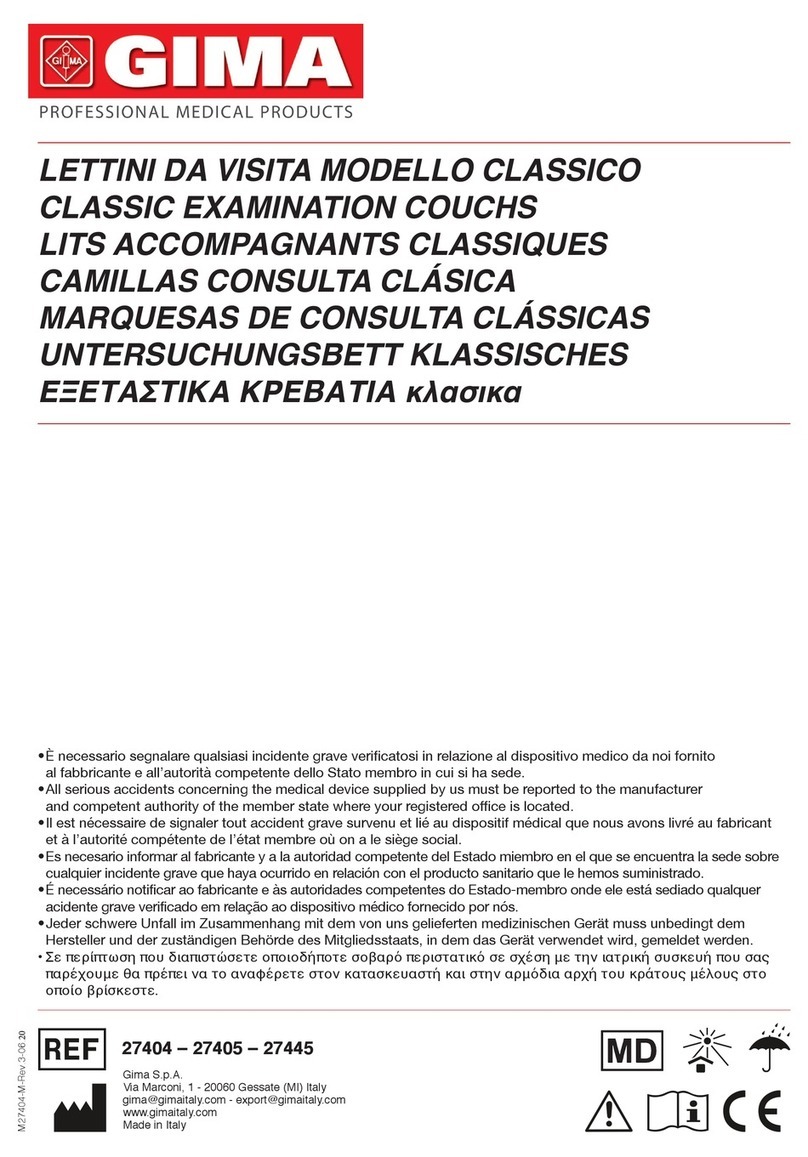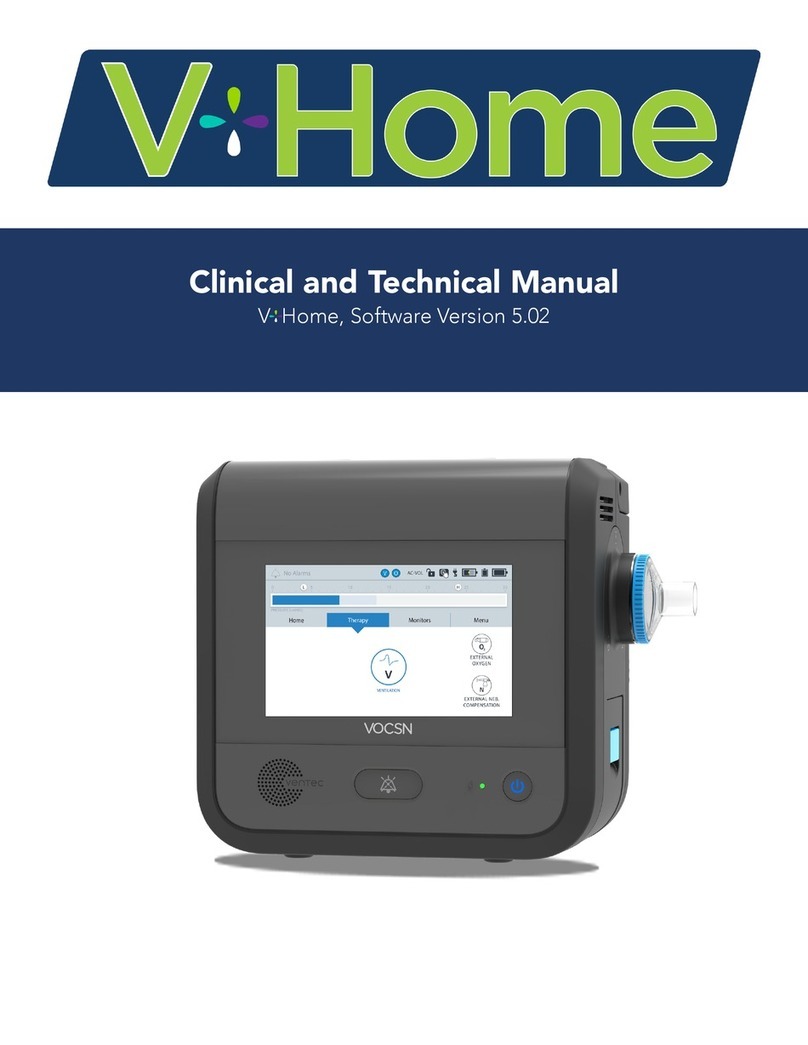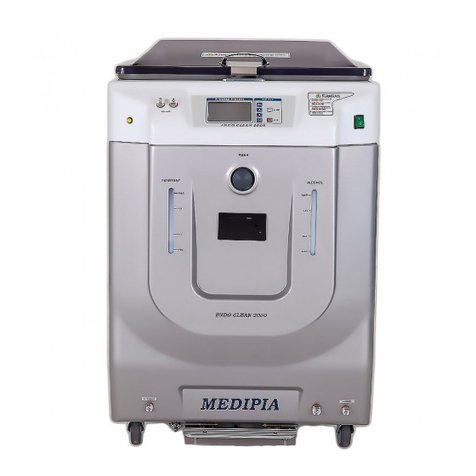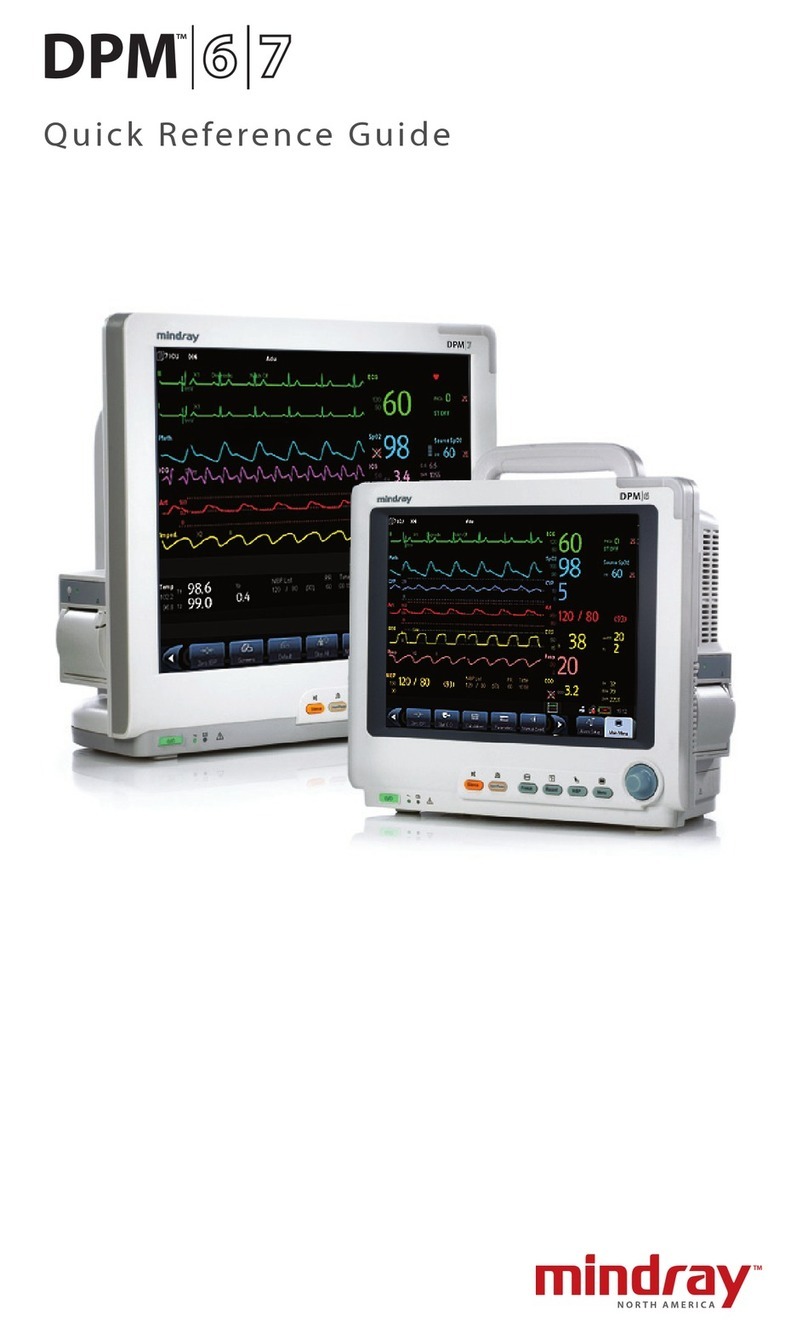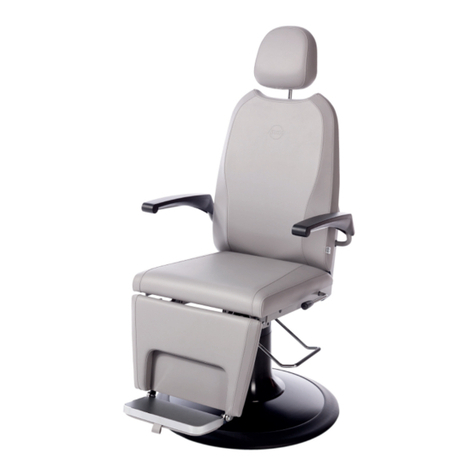Arjo IndiGo User manual

416260-EN Rev 4 · 02/2023
INSTRUCTIONS FOR USE
IndiGo
Intuitive Drive Assist

Design Policy and Copyright
® and ™ are trademarks belonging to the Arjo group of companies.
© Arjo 2023.
As our policy is one of continuous improvement, we reserve the right to modify designs without prior notice. The
content of this publication may not be copied either whole or in part without the consent of Arjo.
WARNING
To avoid injury, always read this Instructions For Use and accompanied documents before
using the product.

3
TABLE OF CONTENTS
Foreword ...................................................................................................................................... 4
Support ...................................................................................................................................... 4
'H¿QLWLRQVLQWKLV,)8 ............................................................................................................... 4
Warning means: Safety warning. Failure to understand and obey this warning may result in
injury for you or other............................................................................................................................4
Safety Instructions ...................................................................................................................... 4
Introduction.................................................................................................................................. 5
Product Overview...................................................................................................................... 5
Intended use for IndiGo Drive Assist ...................................................................................... 5
Before Using IndiGo .................................................................................................................... 6
Using IndiGo ................................................................................................................................ 6
IndiGo Activation / Deactivation and Brakes ........................................................................ 6
Emergency Stop Switch.............................................................................................................. 7
Move the bed ............................................................................................................................. 8
Sleep Mode .............................................................................................................................. 10
Light Indications ......................................................................................................................11
After Using IndiGo ......................................................................................................................11
Cleaning and Disinfection......................................................................................................... 12
Care and Preventive Maintenance ........................................................................................... 12
General..................................................................................................................................... 12
Troubleshooting......................................................................................................................... 13
6SHFL¿FDWLRQV ........................................................................................................................... 15
Recycling.................................................................................................................................... 15
Operating, Transport and Storage Conditions ....................................................................... 15
Explanation of Symbols Used .................................................................................................. 16
FCC compliance Statement: ..................................................................................................... 18
Requirements for Canada:........................................................................................................ 18
Electrical Magnetic Compatibility Information........................................................................ 19

4
FOREWORD
Thank you for purchasing Arjo equipment.
Please contact us if you have any questions
about the operation or maintenance of your
Arjo equipment.
Please read and fully understand these
Instructions for Use (IFU) before using
your IndiGo™ Intuitive Drive Assist .
Information in this IFU is necessary to perform
the proper operation and maintenance of the
equipment. It will help to protect your product and
make sure that the equipment performs to your
satisfaction. The information in this IFU is important
for your safety and must be read and understood
to help prevent possible injury. Unauthorized
PRGL¿FDWLRQVRQDQ\
$UMRHTXLSPHQWFDQDႇHFWVDIHW\
Arjo will not be held responsible for any accidents,
incidents or lack of performance that occur as a
UHVXOWRIDQ\XQDXWKRUL]HGPRGL¿FDWLRQ
to its products.
Assembly, extensions, re-adjustments,
PRGL¿FDWLRQVWHFKQLFDOPDLQWHQDQFHRUUHSDLUV
PXVWEHSHUIRUPHGE\TXDOL¿HGSHUVRQQHO
authorized by Arjo. Contact Arjo for information
regarding maintenance and repair.
Refer to the IFU of the bed to which IndiGoLV¿WWHG
for intended use and complete system information.
IndiGo is available on the following bed frame
systems:
• Citadel™ Bed Frame System
• Enterprise® 5000X Acute Care Hospital Bed
(excluding folded side rails)
• Enterprise® 8000X Acute Care Hospital Bed
• Enterprise® 9000X Acute Care Hospital Bed
Support
Routine maintenance must be performed on your
IndiGo to maintain safety and reliability of the
equipment. See Care and Preventive Maintenance
section, page 13.
If you require further information, please contact
Arjo for comprehensive support and maintenance to
maximize the long-term safety, reliability and value
of the product.
Contact your local Arjo representative
for spare parts. The telephone numbers appear
in the back of this IFU.
Software updates are planned and will occur
throughout life of product.
Denitions in this IFU
Warning means: Safety warning. Failure to
understand and obey this warning may result in
injury for you or other
Caution means: Failure to follow these instructions
may cause damage to all or parts of the system or
equipment.
Note means: This is important information for the
correct use of this system or equipment.
SAFETY INSTRUCTIONS
WARNING
CAUTION
NOTE
WARNING
To minimize the risk of serious injury, carefully
read and follow all safety information and
operating instructions before operating IndiGo.
Ensure all physician orders and facility protocols
are followed.
WARNING
To avoid injury, activate the brake on the bed and
call maintenance if unanticipated motion occurs.
CAUTION
Floor lifts and other care equipment that normally
go under the bed must be handled with caution in
order to not interfere with IndiGo.
CAUTION
Do not place any items on the IndiGo cover during
transport or storage.
CAUTION
Do not use on slopes greater than 6°. Do not use
IndiGo to load a bed into van or truck.
CAUTION
Low bed height will be reduced by approximately
17mm when using taller load cell screw covers.
CAUTION
When operating IndiGo, maintain contact with bed
at all times.

5
INTRODUCTION
These instructions contain information about IndiGo on Arjo beds. IndiGo works as an Intuitive drive assist
when moving beds.
Product Overview
1. Cover
2. Wheel
3. Activation / Deactivation and Brakes label (located on or near all pedal locations)
4. Pedal
5. Emergency stop switch (located at head and foot ends of bed)
6. Load cell screw cover (only used on Enterprise 9000X and Citadel Bed Frame System beds)
Intended use for IndiGo Drive Assist
The IndiGo drive assist is intended to provide assistance for medical beds during patient transfer.
It should only be assembled onto compatible Arjo medical beds listed in the IFU.
The IndiGo drive assist unit should be used by appropriately trained personnel and for the purpose
VSHFL¿HGLQWKH,)8$Q\RWKHUXVHLVSURKLELWHG
NOTE
IndiGo must be used by appropriately trained caregivers or porters with adequate product
knowledge.
1
2
3
46
5
NOTE
Refer to page 7 for further description on IndiGo Activation, Deactivation and Brakes.
Fig. 1

6
BEFORE USING IndiGo
1. Identify that the bed is equipped with IndiGo by locating the IndiGo emergency stop switch,
the IndiGo cover and/or the IndiGo wheel.
2. Prepare for patient transport according to bed IFU and all applicable safety information
and operating instructions.
USING IndiGo
IndiGo Activation / Deactivation and Brakes
Activate / deactivate IndiGo and brake using the pedals located on each corner of the bed. Operate
the pedals with your feet while wearing suitable shoes. Do not operate the pedals with your hands.
The pedals have three positions as shown in Fig. 2:
IndiGo ACTIVATED: a centered drive wheel
HQJDJHVWKHÀRRUZKHQIndiGo is activated.
FREE: all four casters are free to rotate and
swivel and IndiGoZKHHOLVOLIWHGRႇWKHÀRRU
BRAKE: brakes are applied on all four casters
and IndiGo ZKHHOLVOLIWHGRႇWKHÀRRU
When activating IndiGo, place the pedal in the
most upright position. The IndiGo wheel will be
ORZHUHGWRWKHÀRRUDQGEOXHOLJKWVLOOXPLQDWHWR
signify IndiGo is active.
See Fig. 3:
NOTE
,QGL*RKDVWKHVDPHVDIHZRUNLQJORDGDVWKHEHGWRZKLFKLWLV¿WWHG
Fig. 3
NOTE
Refer to Light Indications (shown on page 12) to determine when IndiGo is ready to use.
Fig. 2

7
EMERGENCY STOP SWITCH
The IndiGo Intuitive Drive Assist comes equipped with Emergency Stop Switches located at both the foot
and head ends of the bed.
When the emergency stop switch is activated, an electric brake is applied to reduce momentum and slow
WKHEHGGRZQXQWLOVWRSSHG$WWKHVDPHWLPHWKHEOXHOLJKWVZLOOWXUQRႇDQGWKHGULYHZKHHOZLOOUDLVHXS
IURPWKHÀRRU
Emergency Stop Switch Locations
Activate Emergency Stop Switch
• When the emergency stop switch is pushed down, the electric brakes
are applied to reduce momentum and slow the bed until stopped.
• 7KHEOXHOLJKWVWXUQRႇDQGWKHGULYHZKHHOUHWUDFWVXS
XQGHUWKHEHGDQGRႇWKHÀRRU
NOTE
The emergency stop switch provides a gradual, slow stop rather than an immediate hard stop.
Foot End
Head End
X
X
NOTE
Once the switch is pushed down, it will stay down, with IndiGo deactivated, until the emergency
stop switch is reset and the brake pedal is cycled to the free position then back to the activated
position.
Fig. 4
Fig. 5
Fig. 6

8
Reset Emergency Stop Switch
1. Twist the emergency stop switch clockwise.
2. The switch will pop up and is now reset.
To reset the drive wheel:
1. Cycle the brake pedal down to the free position and
then back up to the activated position. The drive wheel
ZLOOORZHUWRWKHÀRRU
2. The blue LED lights will turn on indicating
WKHGULYHZKHHOKDVORZHUHGWRWKHÀRRU
and IndiGo is now activated.
Move the bed
360 interface
Since IndiGo is built into the bed
LWVHOIWKHUHLVQRVSHFL¿FJULS
or handle. Push or pull the bed
from the foot board, head board
or the side rails as you normally
would when moving the bed.
See Fig. 11
Activated Free Brake
Fig. 8
Fig. 7
Fig. 9
Fig. 11
Fig. 10

9
Maneuverability
IndiGo replaces the bed's ordinary steer lock function with a drive wheel centered under the bed, which
LPSURYHVWKHPDQHXYHUDELOLW\DQGFRQWURO7KHGULYHZKHHOHႇHFWLYHO\PLQLPL]HVWKHVSDFHQHHGHGZKHQ
taking corners or full 360° turns. See Fig. 12 and 13
,QPRVWFDVHVLWLVEHQH¿FLDOWRNHHSIndiGo
DFWLYDWHGLQFRQ¿QHGVSDFHVDQGFURZGHGDUHDV
Ensure there is space to operate before forward
or reverse movement.
Drive Assistance
To use IndiGo:
• Activate IndiGo (1) using the
pedals on any corner of the bed.
• Move bed slightly away from
wall to access to the bed's
power cord (2). See Fig. 15.
• Unplug power cord from
the wall.
• Push or pull bed gently to begin drive assisted movement.
NOTE
Deactivating IndiGo
(pedal in free position), allows for
small positioning adjustments and
sideways movement. See Fig. 14
1
2
Fig. 12 Fig. 13
Fig. 14
Fig. 15

10
7RIXOO\EHQH¿WIURPIndiGo:
• .HHSDFRQVWDQWSUHVVXUHZKLOHPRYLQJRQÀDWVXUIDFHVDQGXSVORSHV
• Pull gently to decelerate and lean backwards to stop (brake assistance). See Fig. 16
• Control speed by a light constant pull
while moving down slopes (brake
assistance). IndiGo will provide brake
assistance. See Fig. 16.
• IndiGo may be kept activated in and
out of elevators. Note that temporary
deactivation allows for small positioning
adjustments and sideways movement
if required.
Sleep Mode
When IndiGoLVDFWLYDWHGDQGWKHEHGLVQRWPRYHGIRUDSSUR[LPDWHO\¿YHPLQXWHVIndiGo goes into sleep
PRGH7KHZKHHOOLIWVRႇWKHÀRRUDQGWKHEOXHOLJKWVWXUQRႇ
To re-engage IndiGo, move the brake pedal to the free position and then back up to the activated position.
7KHGULYHZKHHOORZHUVWRWKHÀRRUDQGWKHEOXHOLJKWVWXUQRQLQGLFDWLQJIndiGo is now active.
NOTE
IndiGo reacts to force applied by the user. IndiGo gives progressive assistance up to a maximum
speed of 5km/h (3mph).
Fig. 16

11
Light Indications
Light
Battery
Action
Status
ACTION
Full Battery
During normal use,
the battery will last for
approximately 5000 m
(3.10 miles)
Low Battery
ÀDVKVHFRQGV
During normal use,
the battery will last for
approximately 900 m (0.56
miles). 20 % left Charge
Critical low battery
ÀDVKVHFRQG
Drive wheel assist will be
disabled in 20 seconds.
6 % left Charge
Failure / Error
ÀDVKHVVHFRQG
Call Service
Refer to Troubleshooting section for more information.
AFTER USING IndiGo
1. Deactivate IndiGo and apply brakes by placing the pedal in the most downward position. See Fig. 17
2. Charge IndiGo by connecting the bed’s power cord to the wall outlet after every use.
NOTE
Refer to IndiGo Activation / Deactivation and Brakes.
Fig. 17

12
CLEANING AND DISINFECTION
For cleaning and disinfection, please refer to cleaning and disinfection instructions in your bed IFU.
CARE AND PREVENTIVE MAINTENANCE
Actions To Be Completed By Caregiver Daily Weekly
Check that the IndiGo cover is undamaged ¥
Check that IndiGo is activated when pedal is in its most upward position ¥
Check the emergency stop assemblies for signs of damage ¥
Check that applicable IndiGo labeling is present and legible ¥
If the result of any of these tests is unsatisfactory, do not use IndiGo. Contact Arjo
or an Arjo-approved service agent.
General
• Examine the IndiGo for obvious signs of damage.
• Exercise the unit’s operation, including the emergency stop switches. If any abnormalities
are observed, refer to the Troubleshooting chapter.
• Examine the IndiGo cables for cuts, abrasions, kinks or other deterioration. Contact Arjo
if damage is observed. Refer to Contact information in the back of this manual.
• Examine the IndiGo drive wheel and tire assembly for damage. If abnormalities are observed,
replace the Drive Wheel Assembly. Refer to Drive Wheel Replacement procedures in the Servicing
chapter to replace.
• Visually inspect the gas spring for excessive oil on shaft. Ensure the gas spring maintains downward
force on the drive wheel when IndiGo is engaged. If excessive oil is present on the shaft or the gas
spring does not maintain downward force when IndiGo is engaged, replace the gas spring. Refer to
Gas Spring Replacement procedure in the Service Manual.
• Check all accessible nuts, bolts and other fasteners to ensure they are present and correctly
tightened.
• Check that IndiGo does not interfere with the scale function through the bed’s full range of motion.
WARNING
7RDYRLGSLQFKULVNRIKDQG¿QJHUV,QGL*RPXVWEHGHDFWLYDWHGDQGEUDNHVRQWKHEHGDSSOLHG
prior to removing obstructions, cleaning and / or servicing the IndiGo wheel.
WARNING
7KHSURFHGXUHEHORZPXVWEHFDUULHGRXWE\VXLWDEO\WUDLQHGDQGTXDOL¿HGSHUVRQQHO)DLOXUHWR
do so may result in injury or an unsafe product.

13
TROUBLESHOOTING
Symptom Possible Cause Action
%HGLVGLႈFXOWKHDY\
to maneuver
Brake pedal is in free
position or brake position
Place brake pedals in IndiGo activation
position.
Emergency stop switch(es)
are pushed down
Ensure the emergency stop switch(es)
are not pushed down. Twist switch(es)
clockwise to re-set.
Brake bar sensor is not
aligned with IndiGo sensor
when pedal is in the
activation position
Ensure pedal is in the activation position,
then move the brake bar sensor so that it
is aligned with the IndiGo sensor. If needed,
loosen the screw on the brake bar sensor to
move, then tighten screw to secure in place.
%HGLVGLႈFXOWWRPDQHXYHU
sideways
Pedal is in IndiGo activation
position
Place pedal in free position so that IndiGo is
not activated.
Bed moves in an
unanticipated way Failure / Error
&RQ¿UPWKDWIndiGoLVSURSHUO\FRQ¿JXUHGIRU
the bed on which it is installed. Recalibrate
IndiGo per testing chapter.
Review LED error codes and implement
corrections as necessary.
Deactivate IndiGo by placing pedal in brake
position.
Contact an Arjo approved service agent.
Flashing blue light
Low battery Complete patient transport / moving the bed
and connect power cord to wall outlet.
Critical Low Battery
Failure / Error Complete patient transport / moving the bed
or brake by placing pedal in brake position.
Contact an Arjo approved service agent.
Review LED error codes and implement
corrections as necessary.
Emergency stop switch
does not function properly
Failure / Error Ensure emergency stop switch assembly
and cabling are intact and functional.
Replace if damaged. If no damage is noted,
troubleshoot PCBA.
Bed weigh scale reading
error at low bed height
Cable routing interferes
with bed articulation
Review cable routing to ensure proper
amount of slack and / or service loop
in applicable locations.
Ensure taller load cell screw covers
are installed.
All functions inoperative Software and / or PCBA
faulty
Replace PCBA.
Cables defective Check cables for cuts, abrasions, kinks
or other deterioration and replace if needed.

14
Symptom Possible Cause Action
No Blue Light
IndiGo is in sleep mode Cycle foot pedal from activation position
to neutral, wait 2 seconds, then cycle
back to activation to activate IndiGo.
Pedal cycled too quickly
Brake pedal is in free
position or brake position
Place brake pedals in IndiGo activation
position.
Emergency stop switch(es)
are pushed down
Ensure the emergency stop switch(es)
are not pushed down. Twist switch(es)
clockwise to re-set.
Cycle foot pedal from activation position
to neutral, wait 2 seconds, then cycle back
to activation to activate IndiGo.
Failure / Error Complete patient transport / moving the
bed or brake by placing pedal in brake
position. Contact an Arjo approved service
agent.
Review LED error codes and implement
corrections as necessary.
&RQ¿UPFKDUJHUVWDWXV/('
- Red = Charging
- Green = Fully charged or Not charging
or Not connected to PCBA
- No LED = Check AC cord connections
or Replace charger
Replace battery pack if charger is functioning
properly.
Low Battery Connect power cord to wall outlet.
Contact an Arjo - approved
service agent.
Move the bed to reactivate IndiGo.
Battery Dead Replace battery pack.
Battery Deeply Dischareged Plug bed into AC outlet. Press battery
wake up button located on the battery
pack and charge for 8 hours.
Unanticipated noise Failure / Error To complete patient transport / moving
the bed deactivate IndiGo by placing pedal
in free position or brake by placing pedal
in brake position.
Contact an Arjo approved service agent.
Ensure drive wheel functions as intended.
If noise continues, replace IndiGo unit.

15
SPECIFICATIONS
Li-Ion battery 25.2V Nominal Voltage, 4.3 Amp Capacity
Battery Charge Time From Empty: ~4 hours
Full battery achievable distance 5000m (3.10 miles)
Low battery achievable distance 900m (0.56 miles)
Critical battery time remaining 20 seconds
Maximum speed for full assistance 5km/h (3mph)
IndiGo Drive Wheel Non-marking
Degree of liquid ingress protection IPX4
Degree of protection against electric shock Class 1
Allowed combination Citadel Bed Frame System
Enterprise 5000X Acute Care Hospital Bed (excluding
folded side rails), Enterprise 8000X Acute Care Hospital
Bed, Enterprise 9000X Acute Care Hospital Bed
Expected Service Life The expected service life is 10 years when preventative
PDLQWHQDQFHLVSHUIRUPHGDVVSHFL¿HGLQWKH&DUHDQG
Preventive Maintenance section.
Watt - hour rating 108 Wh Nominal
Safe Working Load IndiGo has the same Safe Working Load as the bed to
ZKLFKLWLV¿WWHG
RECYCLING
The device should be recycled according to local regulations.
Battery Lithium-ion.
Not for disposal, only to be recycled.
Package Wood and corrugated cardboard recyclable.
IndiGo Electric, metal and plastic parts shall be separated
and recycled according to (WEEE) and according
to markings on the unit.
OPERATING, TRANSPORT AND STORAGE CONDITIONS
Temperature (operating) 14°C to 35°C (57°F to 95°F)
Temperature (transport and storage) -29°C to 50°C (-20°F to 122°F)
Relative Humidity (operating) 20%-80%
Relative Humidity (transport and storage) 20% to 90% at 30°C (86°F), non-condensing
Atmospheric Pressure (operating) 700 hPa to 1060 hPa
Atmospheric Pressure (transport and storage) 700 hPa to 1060 hPa

16
EXPLANATION OF SYMBOLS USED
Warning of possible hazard
WRV\VWHPSDWLHQWRUVWDႇ
Transport and Storage
Humidity High and Low Limits
Caution Transport and Storage
Pressure High and Low Limits
Important Operational Information Reference Number
Date of Manufacturer
IPXX &ODVVL¿FDWLRQRIGHJUHHVRI
protection provided by enclosures.
Refer to instruction manual/booklet -
Instructions for use should be read
DIRECTIVE 2011/65/EU on the
restriction of the use of certain
hazardous substances in electrical
and electronic equipment (RoHS)
Separate electrical and electronic
components for recycling in
accordance with 2012/19/EC
(WEEE).
UL recognized component mark
Manufacturer
Serial Number
Lithium-Ion Battery
Transport and Storage Temperature
High and Low Limits

17
UK SYMBOL EXPLANATION
This section is only applicable to United Kingdom (UK) market when UK marking is applied to the Arjo
medical device labelling.
UK marking indicating conformity with UK Medical Devices Regulations 2002 (SI
2002 No 618, as amended)
UK Responsible Person & UK Importer:
Arjo (UK) Ltd, ArjoHuntleigh House, Houghton Regis. LU5 5XF
,VWKHDSSRLQWHG8.5HVSRQVLEOH3HUVRQDVGH¿QHGLQ8.0HGLFDO'HYLFHV5HJXODWLRQV6,
No 618, as amended).
For Northern Ireland (NI) CE marking will still apply until further amendment to applicable regulations.

18
FCC COMPLIANCE STATEMENT:
This device complies with Part 15 of the FCC Rules. Operation is subject to the following two conditions:
(1)This device may not cause harmful interference, and
(2)This device must accept any interference received, including interference that may cause undesired
operation.
This equipment has been tested and found to comply with the limits for a Class A digital device, pursuant
to Part 15 of the FCC Rules. These limits are designed to provide reasonable protection against harmful
interference when the equipment is operated in a commercial environment. This equipment generates,
uses, and can radiate radio frequency energy, and if it is not installed and used in accordance with the
instruction manual, it may cause harmful interference to radio communications.
Operation of this equipment in a residential area is likely to cause harmful interference, in which case
the user will be required to correct the interference at his own expense.
REQUIREMENTS FOR CANADA:
This device complies with Industry Canada license exempt RSS standard(s). Operation is subject to
the following two conditions: (1) this device may not cause interference, and (2) this device must accept
any interference, including interference that may cause undesired operation of the device.
Le présent appareil est conforme aux CNR d'Industrie Canada applicables aux appareils radio exempts
de licence. L'exploitation est autorisée aux deux conditions suivantes: (1) l'appareil ne doit pas produire
de brouillage, et (2) l'utilisateur de l'appareil doit accepter tout brouillage radioélectrique subi, même si
le brouillage est susceptible d'en compromettre le fonctionnement.
Under Industry Canada regulations, this radio transmitter may only operate using an antenna of a type
and maximum (or lesser) gain approved for the transmitter by Industry Canada. To reduce potential
radio interference to other users, the antenna type and its gain should be so chosen that the equivalent
isotropically radiated power (e.i.r.p.) is not more than that necessary for successful communication.
Conformément à la réglementation d'Industrie Canada, le présent émetteur radio peut fonctionner avec
une antenne d'un type et d'un gain maximal (ou inférieur) approuvé pour l'émetteur par Industrie Canada.
Dans le but de réduire les risques de brouillage radioélectrique à l'intention des autres utilisateurs, il faut
choisir le type d'antenne et son gain de sorte que la puissance isotrope rayonnée équivalente (p.i.r.e.)
ne dépasse pas l'intensité nécessaire à l'établissement d'une communication satisfaisante.

19
ELECTRICAL MAGNETIC COMPATIBILITY INFORMATION
Product has been tested for compliance with current regulatory standards regarding its capacity to block
EMI (electromagnetic interference) from external sources.
Some procedures can help reduce electromagnetic interferences:
• Ensure that other devices in patient-monitoring and/or life-support areas comply to accepted
emissions standards.
Intended Environment: Professional Healthcare Facility Environment.
Exceptions: HF Surgical Equipment and the RF Shielded room of an ME SYSTEM for magnetic
resonance imaging.
Guidance and manufacturer’s declaration – electromagnetic emissions
Emission test Compliance Electromagnetic environment - guidance
RF emissions
CISPR 11 Group 1
This equipment uses RF energy only for its internal
functions. Therefore its RF emissions are very low
and are not likely to cause any interference in nearby
electronic equipment.
This equipment is suitable for use in all establishments,
including domestic establishments and those directly
connected to the public low voltage power supply
network that supplies buildings used for domestic
purposes.
RF emissions
CISPR 11
Class A
Harmonic emissions
IEC 61000-3-2 Class A
9ROWDJHÀXFWXDWLRQV
ÀLFNHUHPLVVLRQV
IEC 61000-3-3
Complies
NOTE: The EMISSIONS characteristics of this equipment make it suitable for use in industrial
areas and hospitals (CISPR 11 class A). If it is used in a residential environment (for which CISPR
FODVV%LVQRUPDOO\UHTXLUHGWKLVHTXLSPHQWPLJKWQRWRႇHUDGHTXDWHSURWHFWLRQWRUDGLR
frequency communication services. The user might need to take mitigation measures, such as
relocating or re-orienting the equipment.
WARNING
Portable RF communications equipment (including peripherals such as antenna cables and external
antennas) should be used no closer than 30 cm (12 inches) to any part of the IndiGo, including cables
VSHFL¿HGE\WKHPDQXIDFWXUHU2WKHUZLVHGHJUDGDWLRQRIWKHSHUIRUPDQFHRIWKLVHTXLSPHQWFRXOGUHVXOW
WARNING
8VHRIDFFHVVRULHVWUDQVGXFHUVDQGFDEOHVRWKHUWKDQWKRVHVSHFL¿HGRUSURYLGHGE\WKHPDQXIDFWXUHU
of this equipment could result in increased electromagnetic emissions or decreased electromagnetic
immunity of this equipment and result in improper operation.
WARNING
Use of this equipment adjacent to or stacked with other equipment should be avoided because it could
result in improper operation. If such use is necessary, this equipment and the other equipment should be
observed to verify that they are operating normally.

20
Guidance and manufacturer’s declaration – electromagnetic immunity
Immunity test EN 60601-1-2 test level Compliance level
Electrostatic discharge
(ESD)
EN 61000-4-2
±2kV, ±4kV, ±8kV, ±15kV air
±8kV contact
±2kV, ±4kV, ±8kV, ±15kV air
±8kV contact
Conducted
disturbances inducted
E\5)¿HOGV
EN 61000-4-6
3V in 0,15 MHz to 80 MHz
6V in ISM and amateur radio bands
between 0,15 MHz and 80 MHz
80% AM at 1 kHz
3V in 0,15 MHz to 80 MHz
6V in ISM and amateur radio bands
between 0,15 MHz and 80 MHz
80% AM at 1 kHz
Radiated RF
HOHFWURPDJQHWLF¿HOG
EN 61000-4-3
Professional Healthcare environment
3 V/m
80 MHz to 2,7 GHz
80% AM at 1 kHz
Professional Healthcare environment
3 V/m
80 MHz to 2,7 GHz
80% AM at 1 kHz
3UR[LPLW\¿HOGV
from RF wireless
communications
equipment
EN 61000-4-3
385 MHz - 27 V/m
450 MHz - 28 V/m
710, 745, 780 MHz - 9V/m
810, 870, 930 MHz - 28 V/m
1720, 1845, 1970, 2450 MHz – 28 V/m
5240,5500, 5785 MHz - 9V/m
385 MHz - 27 V/m
450 MHz - 28 V/m
710, 745, 780 MHz - 9V/m
810, 870, 930 MHz - 28 V/m
1720, 1845, 1970, 2450 MHz – 28 V/m
5240,5500, 5785 MHz - 9V/m
Electrical fast transient/
burst EN 61000-4-4
±2kV AC port
100kHz repetition frequency
±2kV AC port
100kHz repetition frequency
Power frequency
0DJQHWLF¿HOG
EN 61000-4-8
30A/m
50 Hz or 60 Hz
30A/m
50 Hz
Surge
EN 61000-4-5
±0,5kV ±1kV; ±2 kV, AC Mains, Line to
Ground
±0,5kV ±1kV, AC Mains, Line to Line
±0,5kV ±1kV; ±2 kV, AC Mains, Line to
Ground
±0,5kV ±1kV, AC Mains, Line to Line
Voltage dips, short
interruptions and
voltage variations
on power supply
input lines
EN 61000-4-11
0 % UT; 0,5 cycle
At 0°, 45°, 90°, 135°, 180°, 225°, 270°
and 315°
0 % UT; 1 cycle
and
70 % UT; 25/30 cycles
Single phase: at 0°
0 % UT; 250/300 cycle
0 % UT; 0,5 cycle
At 0°, 45°, 90°, 135°, 180°, 225°, 270°
and 315°
0 % UT; 1 cycle
and
70 % UT; 25/30 cycles
Single phase: at 0°
0 % UT; 250/300 cycle
Proximity magnetic
¿HOGV
EN 61000-4-39
134,2 kHz - 65 A/m
13,56 MHz - 7,5 A/m
134,2 kHz - 65 A/m
13,56 MHz - 7,5 A/m
NOTE: UT is the AC mains voltage prior to application of the test level.
Table of contents
Other Arjo Medical Equipment manuals
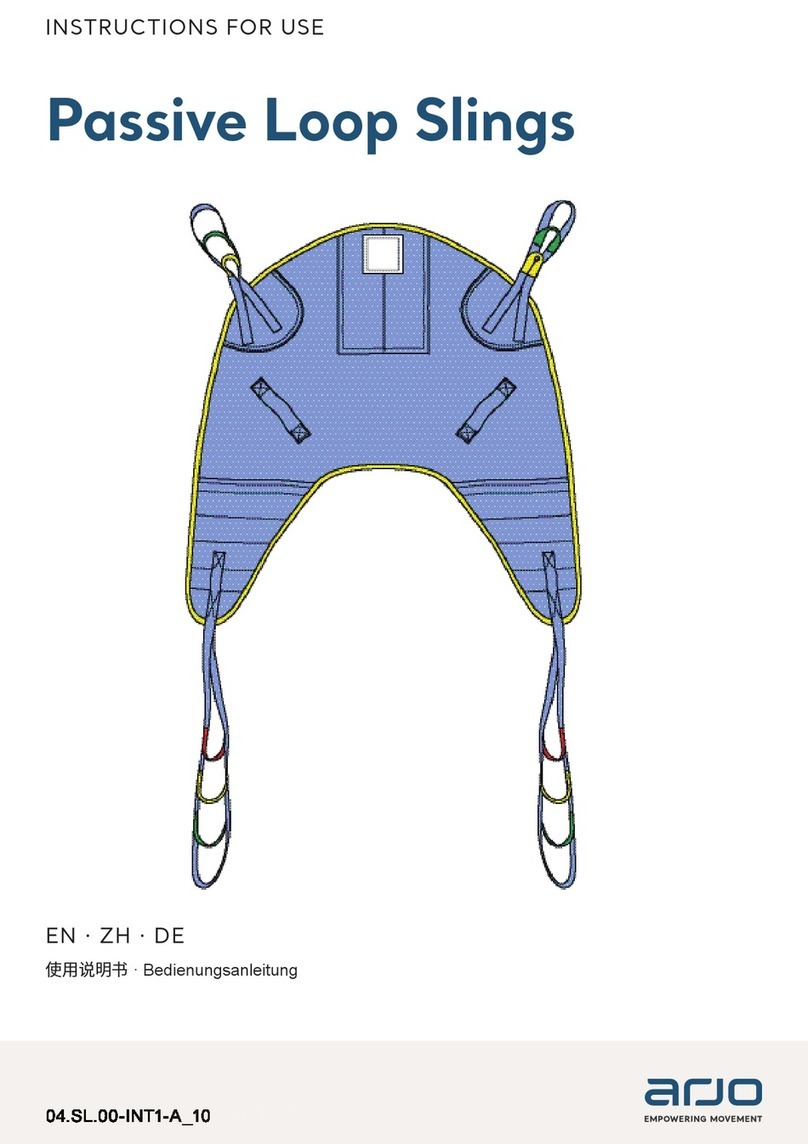
Arjo
Arjo MLAAS2000 User manual
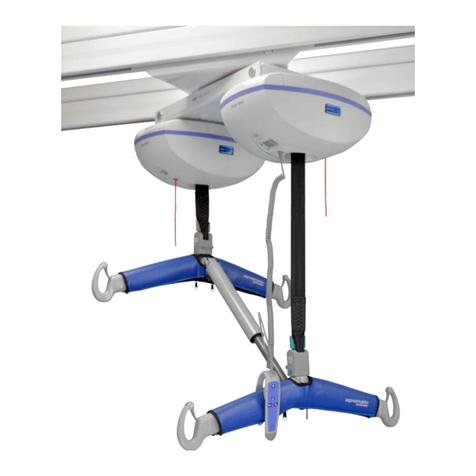
Arjo
Arjo Maxi Sky 2 PLUS User manual
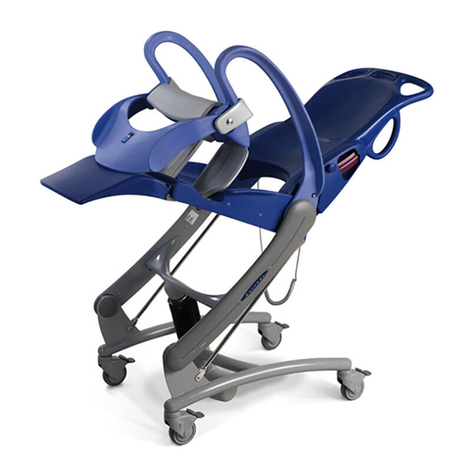
Arjo
Arjo CARENDO Operating instructions
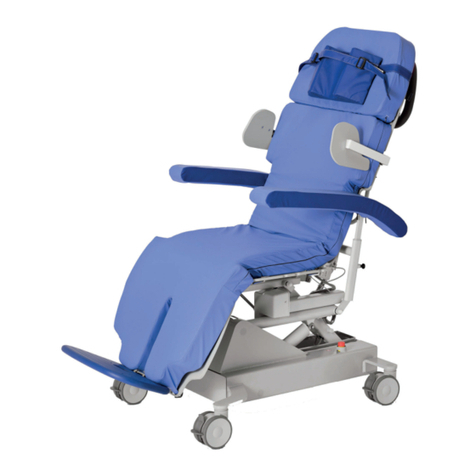
Arjo
Arjo Sara Combilizer User manual
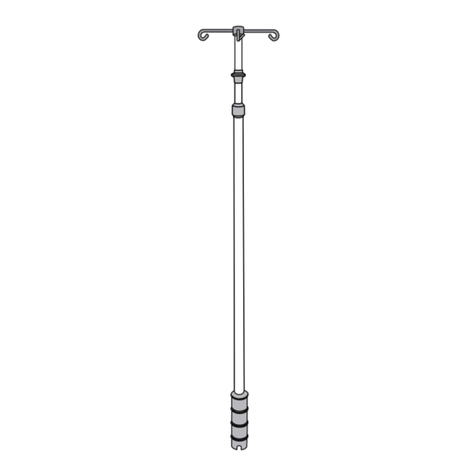
Arjo
Arjo Enterprise ENT-ACC24 User manual

Arjo
Arjo SARA Combilizer User manual
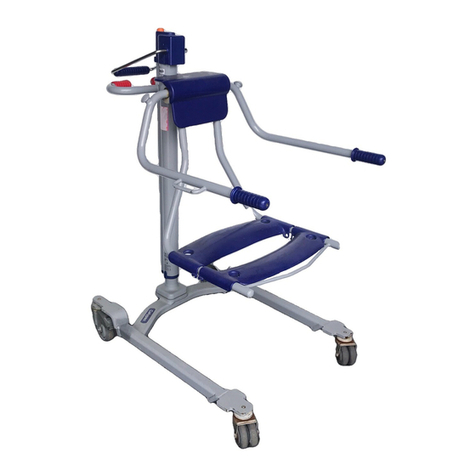
Arjo
Arjo Calypso User manual
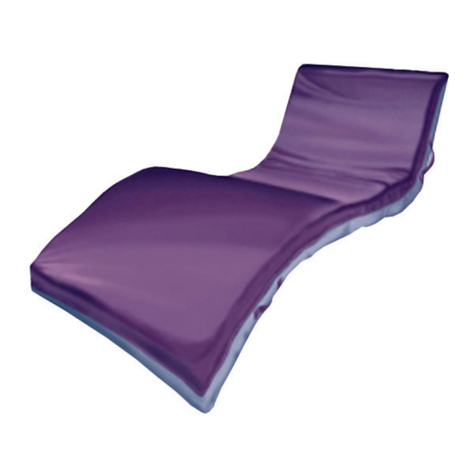
Arjo
Arjo TheraRest User manual
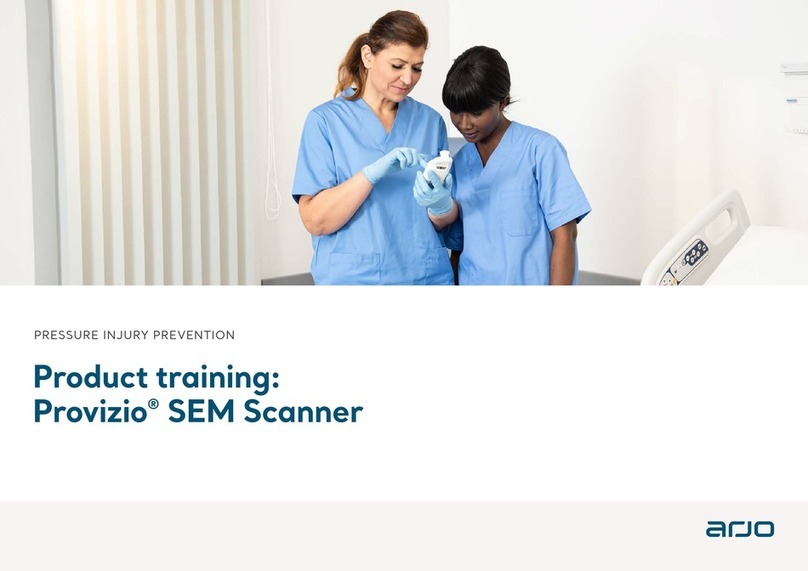
Arjo
Arjo Provizio SEM Scanner User manual
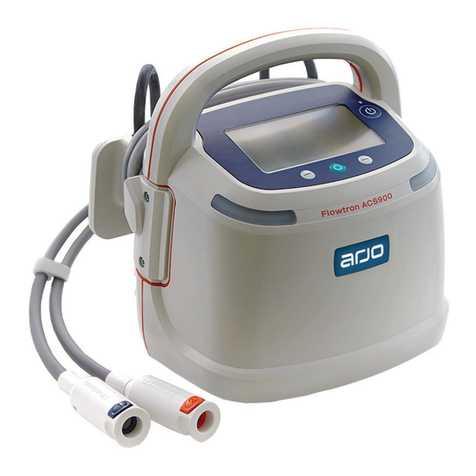
Arjo
Arjo Flowtron ACS900 User manual
